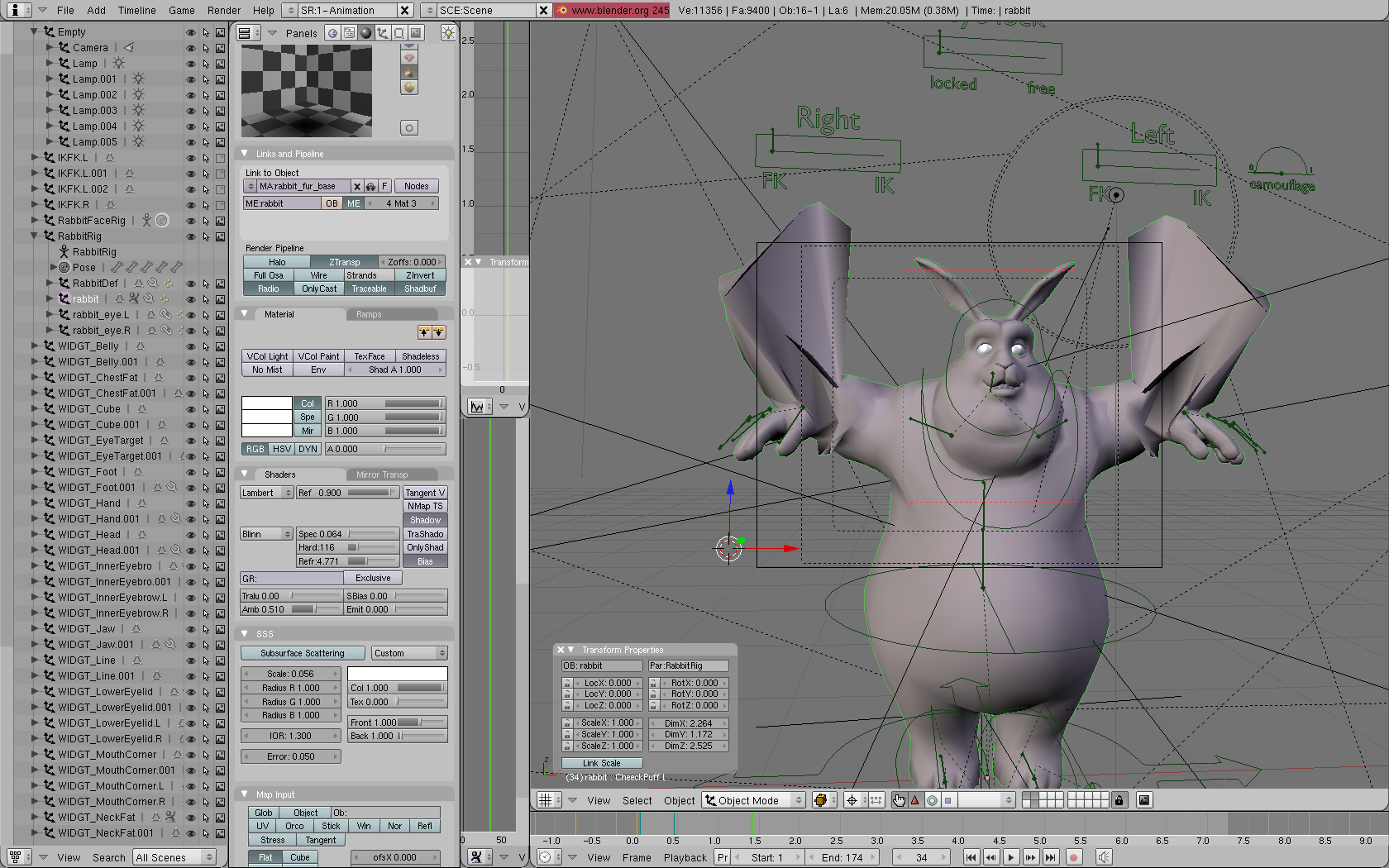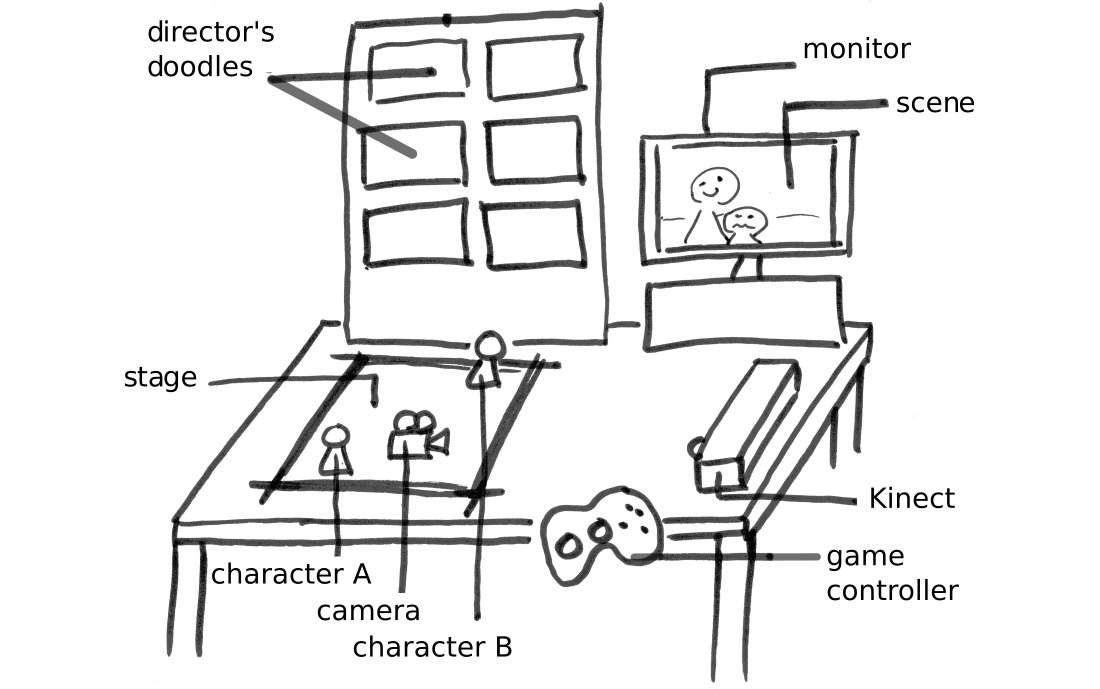Proposed tangible system
With comparison to traditional interface
Of the roles explored, the director, storyboard artist and previz lead show the greatest synergy in concerns. All three expressed a need for tools that better support communication and collaboration across disciplines.
We propose the creation of a tangible interface for creating 3D or technical storyboards. Ideally, the system should be quick and easy to use, require little to no training and have the potential to allow all three roles to collaborate on a scene simultaneously (see brief comparison below or demo comic for more detail). This would allow for a shorter storyboarding phase and a smoother transition from 2D to 3D. Our research will focus on feasibility and accessibility, leaving the collaboration aspect for future work.
| Traditional interface | Tangible interface |
|---|---|

|

|
| Trained animators use complex software packages like Blender or Maya to create scenes and animate 3D assets. These use keyboard and mouse to interact with the myriad windows, icons and menus required for the many tasks they need to perform. The same packages are used for both previz and production work, despite the difference in fidelity requirements. This neccesitates high levels of training, raising the barrier to entry for previz work. | The proposed interface uses a depth sensor (e.g. Kinect) to detect the user's arrangement of 3D-printed camera and characters on a tabletop. This is converted into a virtual 3D scene and displayed on a monitor (see demo comic). The GUI is controlled with a game controller, creating a position-neutral, user-neutral input device that will ultimately allow multiple collaborators to work together from anywhere around the table. Our stripped back interface aims to lower the barrier of entry to previz at the cost of limiting the range of tasks available. |
"Proposed tangible system" is an online addendum to Viability of a tangible tabletop for industry storyboarding [Rix 2015].